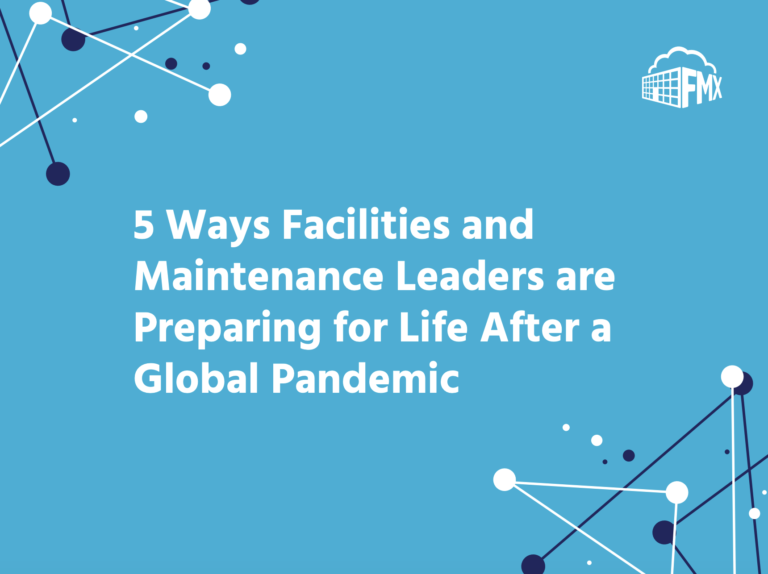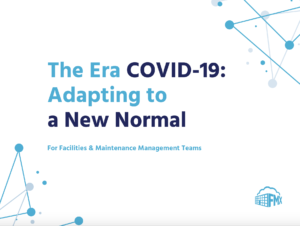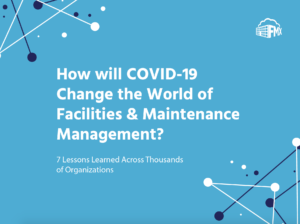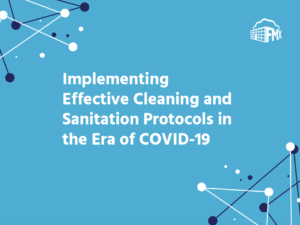No matter who your organization serves or how you serve them, keeping your community safe has been the North Star of facilities management. The current global pandemic has only reinforced the importance of preparedness and transparency around your facility operations and shown how an effective and efficient facilities management program is a critical component of life in the “new” normal. The entire world is looking out of a different lens and will be for quite some time and it is another opportunity to deliver on your commitment to your teams and communities. We’ve outlined five ways facilities leaders are preparing for life after the pandemic.
Ensure effective communication is possible
Communities and individuals have increased expectations around the communications from leaders on the status of their facilities. Leaders are developing and solidifying the systems and processes in place that allow for easy communication between staff members and with their customers. Effective communication is always important, but when situations like the current pandemic arise, dispatching information to the appropriate people is crucial.
Leaders are ensuring they can effectively communicate needs to their teams. Most of them are even putting software in place to allow teams to collaborate on tickets and stay up-to-date on new information, ticket and event status, and any pressing issues. Organizations have realized that being able to communicate important information to customers and other stakeholders is crucial. They are searching for systems that will streamline this process for future communications. Leaders are also being mindful of contractors, vendors, and partners who often play a pivotal role in their operations, so maintaining communication with them is even more critical than ever.
Implement new cleaning protocols
Clean facilities are at the forefront of everyone’s minds and those thoughts aren’t going anywhere anytime soon. Parents will expect that school doors, drinking fountains, and desks are regularly sanitized for the safety of their children; customers will expect restaurant chefs to be wearing gloves and frequently washing their hands; fitness enthusiasts expect gym equipment to be wiped down regularly by management. Even if they do not express these expectations, giving customers, parents, staff, and students the peace of mind that you are supporting their health and safety builds trust during these uncertain times.
Many states have already started defining new cleaning and health standards for each area of business, and ensuring compliance with these standards is going to be more important than ever for the safety and wellbeing of your team, customers, and the community. Putting a system in place that allows you to document your industry’s specific cleaning guidelines ensures your entire team has access to these new protocols. You can take this a step further by setting up preventive maintenance tasks that show, step by step, how to follow these new regulations. Failure to comply with these new, and accumulating, guidelines could be detrimental to your business.
Be on the lookout for updates from your organization’s residing state regarding new standards for your industry.
Prepare for moderate levels of social distancing in the future
Moderate levels of social distancing will be the “new normal” for quite some time. In recent news, several universities are considering postponing in person classes until 2021. Experts are also anticipating that sporting events will have no spectators and that concerts and other large events will not take place until the Fall of 2021. When restaurants do re-open they will most likely not operate at maximum capacity, and some organizations may not be allowed to open for at least another couple of months due to the nature of their business.
Your team should be thinking about how social distancing will affect your organization and your department, and determining how to handle this change. Will remote work styles still be predominant for your organization? Is the maintenance or facilities department still working in the building? If so, can your team take advantage of the empty facilities and get started on new projects?
This new state may be around longer than we are comfortable with, so the best leaders are beginning to think of ways to optimize this time and plan for future success.
Equip your team with the tools they need to be successful anywhere
It’s become apparent that having the flexibility to work anytime, anywhere, and on any device at a moment’s notice is extremely important. Without it, teams have no way to communicate, information falls through the cracks, and productivity decreases significantly.
Circumstances less severe than a global pandemic arise frequently, and leaders have determined that equipping their employees with the right tools to get work done from their homes is the best way to stay efficient and productive. Facilities and maintenance managers are implementing cloud-based software that allows their teams to manage maintenance, events, technology requests, and more from their homes. This has helped manage the current crisis and will help streamline processes in the future.
In addition, leaders are giving their teams laptops, iPads, and other technologies to ensure that even if they are home with a cold, taking care of a sick loved one, or simply looking up work orders after hours they are able to access the information they need when they need it.
Reassure customers and stakeholders of precautions your organization is taking
In order to feel comfortable visiting your facility, accepting your products, sending children to your school district, or eating your restaurant’s food, customers will want to know what you are doing to put their health and safety first. Communicating the new cleaning protocols you’ve established is going to be very important..
Begin by ensuring everyone in your organization that your team is “on top of it”. If all employees feel safe at the workplace that will feed to customers and the community. Share your cleaning processes with them and ask for feedback or improvements to ensure it’s the best it can be.
If customers, contractors, vendors, or partners visit your facilities, be sure to hang signs that show these new protocols as well. This will put them at ease as soon as they arrive. If you ship items to customers, emailing or calling them to let them know of the processes in place will alleviate any concerns they may have regarding the sanitation of products they receive.
In a state like this, over-communicating is better than under-communicating. People want to know how you are handling the situation in order to feel safe and comfortable purchasing services or products from your organization.



